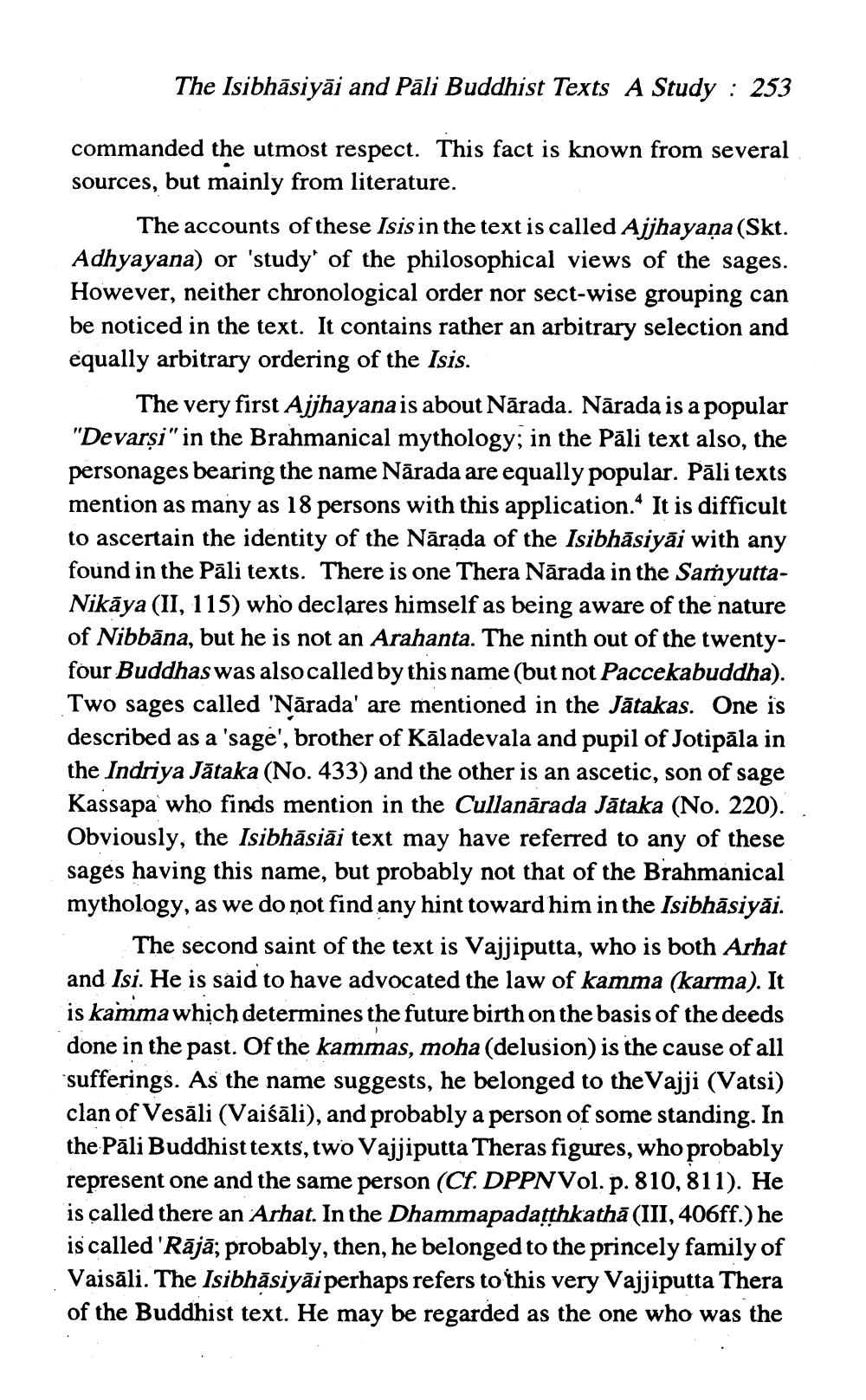________________ The Isibhasiyai and Pali Buddhist Texts A Study : 253 commanded the utmost respect. This fact is known from several sources, but mainly from literature. The accounts of these Isis in the text is called Ajjhayana (Skt. Adhyayana) or 'study of the philosophical views of the sages. However, neither chronological order nor sect-wise grouping can be noticed in the text. It contains rather an arbitrary selection and equally arbitrary ordering of the Isis. The very first Ajjhayana is about Narada. Narada is a popular "Devarsi" in the Brahmanical mythology; in the Pali text also, the personages bearing the name Narada are equally popular. Pali texts mention as many as 18 persons with this application. It is difficult to ascertain the identity of the Narada of the Isibhasiyai with any found in the Pali texts. There is one Thera Narada in the SamyuttaNikaya (II, 115) who declares himself as being aware of the nature of Nibbana, but he is not an Arahanta. The ninth out of the twenty Buddhas was also called by this name (but not Paccekabuddha). Two sages called 'Narada' are mentioned in the Jatakas. One is described as a 'sage', brother of Kaladevala and pupil of Jotipala in the Indriya Jataka (No. 433) and the other is an ascetic, son of sage Kassapa who finds mention in the Cullanarada Jataka (No. 220). Obviously, the Isibhasiai text may have referred to any of these sages having this name, but probably not that of the Brahmanical mythology, as we do not find any hint toward him in the Isibhasiyai. The second saint of the text is Vajjiputta, who is both Arhat and Isi. He is said to have advocated the law of kamma (karma). It is kamma which determines the future birth on the basis of the deeds done in the past. Of the kammas, moha (delusion) is the cause of all sufferings. As the name suggests, he belonged to theVajji (Vatsi) clan of Vesali (Vaisali), and probably a person of some standing. In the Pali Buddhist texts, two Vajjiputta Theras figures, who probably represent one and the same person (Cf. DPPNVol. p. 810, 811). He is called there an Arhat. In the Dhammapadatthkatha (III, 406ff.) he is called 'Raja; probably, then, he belonged to the princely family of Vaisali. The Isibhasiyai perhaps refers to this very Vajjiputta Thera of the Buddhist text. He may be regarded as the one who was the




